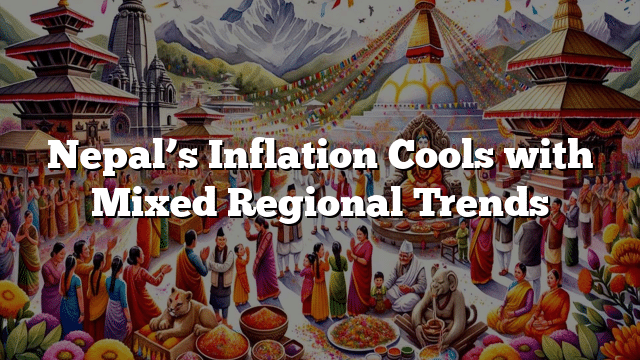
Nepal’s consumer price inflation exhibited a mixed trend across various regions, according to the latest data. While the Kathmandu Valley and Terai regions experienced a moderation in inflation rates, the Hilly region witnessed a notable increase.
The year-on-year consumer price inflation in the Kathmandu Valley stood at 4.06 percent, a significant drop from 8.57 percent a year ago. Similarly, the Terai region recorded an inflation rate of 4.58 percent, down from 7.68 percent a year earlier.
However, the Hilly region bucked the trend, with inflation rising to 5.33 percent, higher than the 7.01 percent recorded a year ago. The Mountain region saw an inflation rate of 4.32 percent, a moderation from the previous year’s 7.47 percent.
Overall, Nepal’s year-on-year consumer price inflation moderated to 4.61 percent in mid-April 2024, down from 7.76 percent a year ago, reflecting the evolving economic conditions in the country.
Within the inflation categories, the Food and Beverage category saw an inflation rate of 5.21 percent, while the Non-Food and Service category recorded an inflation rate of 4.14 percent in the review month.
Analyzing the Food and Beverage category, the year-on-year price index of various sub-categories showed mixed trends. Spices recorded a substantial increase of 22.64 percent, followed by vegetables at 16.99 percent, pulses and legumes at 10.94 percent, cereal grains and their products at 7.59 percent, and non-alcoholic drinks at 6.06 percent. However, the price index of the ghee and oil subcategory decreased by 10.10 percent.
In the Non-Food and Services category, miscellaneous goods and services saw a notable increase in the year-on-year price index at 12.81 percent, followed by recreation and culture at 12.61 percent, and education at 7.31 percent. Conversely, the transportation subcategory witnessed a slight decrease of 0.33 percent in the year-on-year price index.
The moderation in consumer price inflation reflects the evolving economic conditions in Nepal, influenced by various factors such as changes in food prices, global market trends, and domestic economic policies. However, the regional variations and variations across product categories highlight the need for targeted measures to address specific inflationary pressures.
Related:



